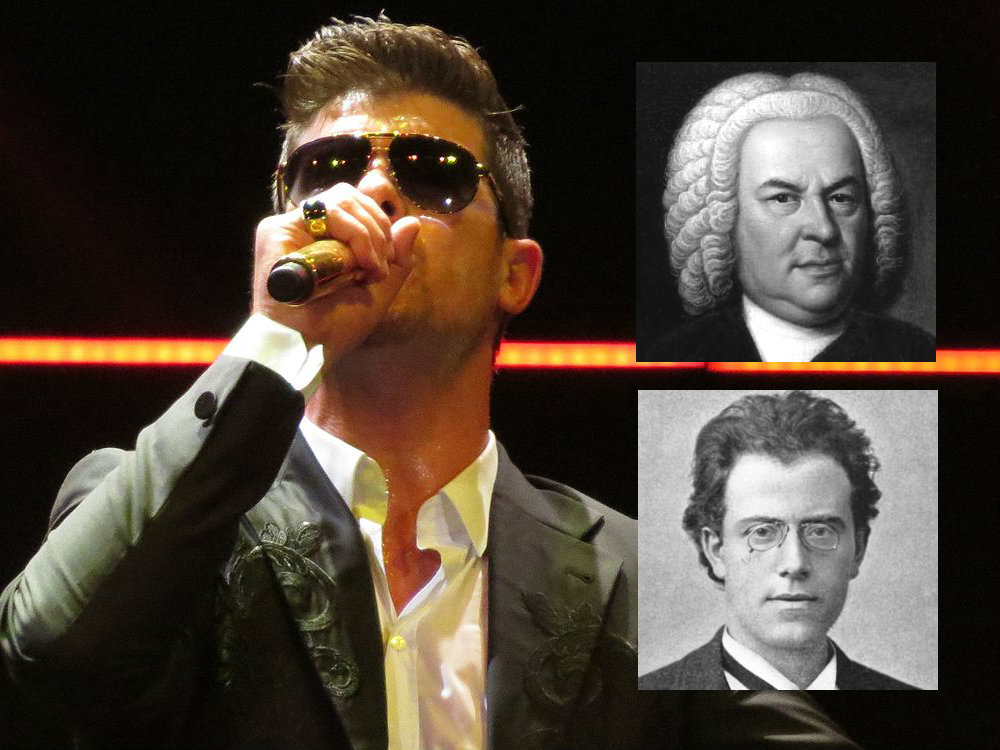

must pay millions in copyright infringement fees. Their song in question, "Blurred Lines," became the biggest hit of of 2013. Here's a snippet:
They each earned more than $5 million from the track. But now much of that will be going to the Marvin Gaye estate because a jury on Tuesday found that Thicke and Williams copied this song by Gaye:
The idea of borrowing musical ideas is as old as music itself. It just wasn’t called stealing before copyright laws. A composer reworked a tune from someone else, or was inspired by someone else’s melody, or learned about a particular style by transcribing someone else’s music.
And it was often a point of honor for composers.
Johann Sebastian Bach never traveled to Italy, but he learned the “Italian style” by transcribing some of Antonio Vivaldi’s concertos. Here’s Vivaldi’s Concerto for Four Violins:
And here’s Bach’s nearly note-for-note transcription for four keyboards:
But composers went beyond just transcribing. In fact, composer Igor Stravinsky once said: “A good composer does not imitate; he steals.”
“Steal” is a strong word. Most of the time you’ll see words like “borrow” or “inspired by” for works written before modern copyright law.
Take a listen to the unusual opening of Beethoven’s Symphony No. 4:
Now listen to the opening of Mahler’s First Symphony, written more than 80 years later:
Later in the symphony, Mahler uses the nursery rhyme “Frere Jacques” and turns it into a funeral march:
Mahler and Bach were free to use other people’s tunes and ideas in their own works because copyright law didn’t exist in their lifetimes.
But sometimes, even copyright laws don’t protect a composer.
Take a listen to the beginning of Stravinsky’s “The Rite of Spring:”
Nown here’s the Stormtroopers theme in “Star Wars:”
John Williams’ famous score was “inspired” by Stravinsky’s Rite of Spring in several places.
When Williams wrote the soundtrack to “Star Wars,” “The Rite of Spring” was under copyright protection and, in theory, Williams should have had to pay the Stravinsky estate. He didn’t, but was never sued.
To get a glimpse of how valuable classical music copyrights can be, you can look to the Ravel estate.
Maurice Ravel’s audience favorite “Bolero” generates an estimated $2.3 million per year according to The Guardian -- at least until this year, when Bolero falls out of copyright protection. (If “Bolero” can generate that kind of royalty income, you can just imagine what the Mozart estate would be worth had Mozart’s music been protected by copyright.)
So Robin Thicke was in good company if indeed he did borrow Marvin Gaye's tune. But it would have cost him a lot less if he had borrowed something from Mozart instead.









